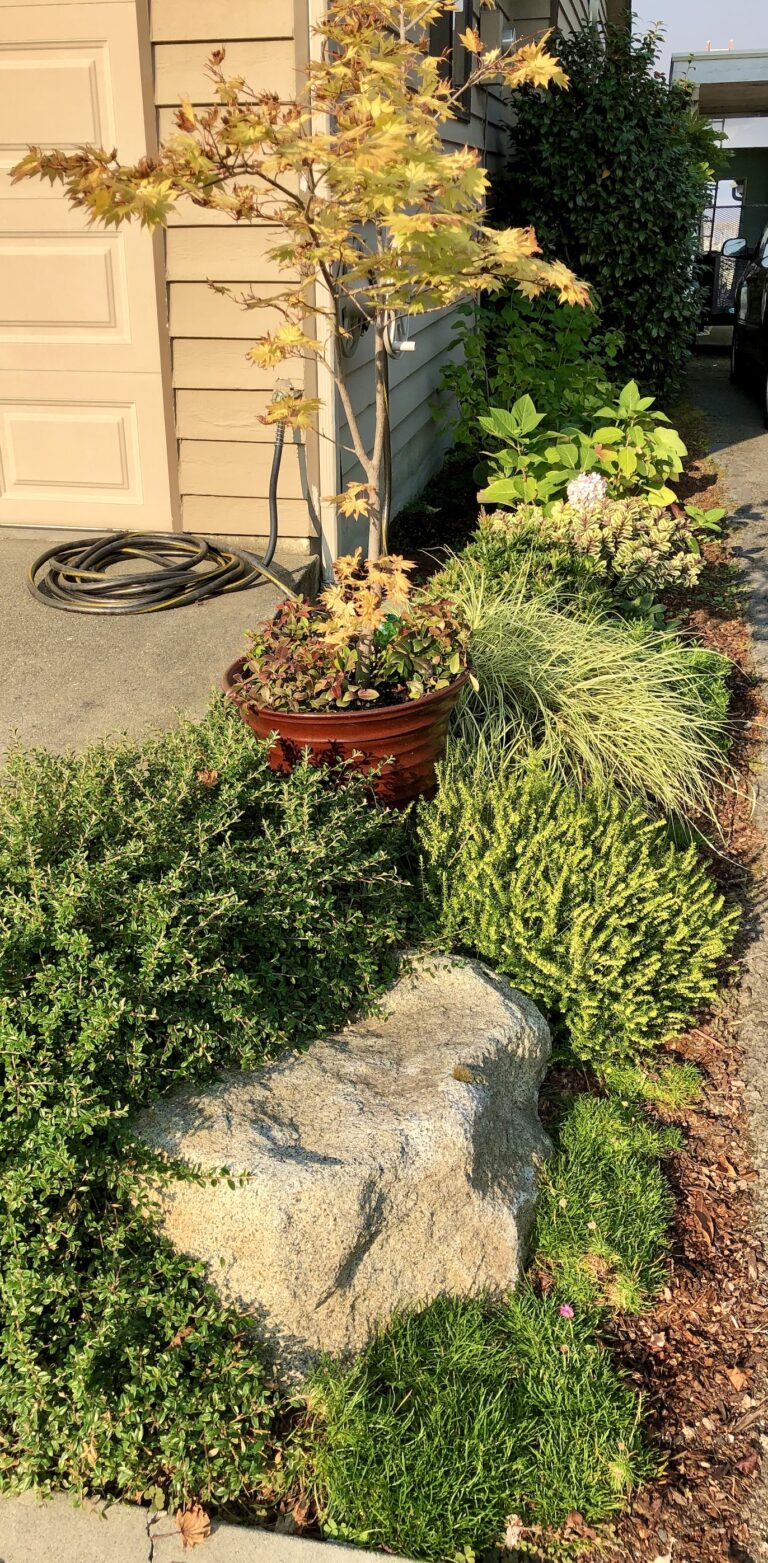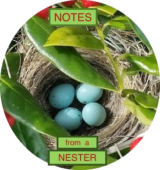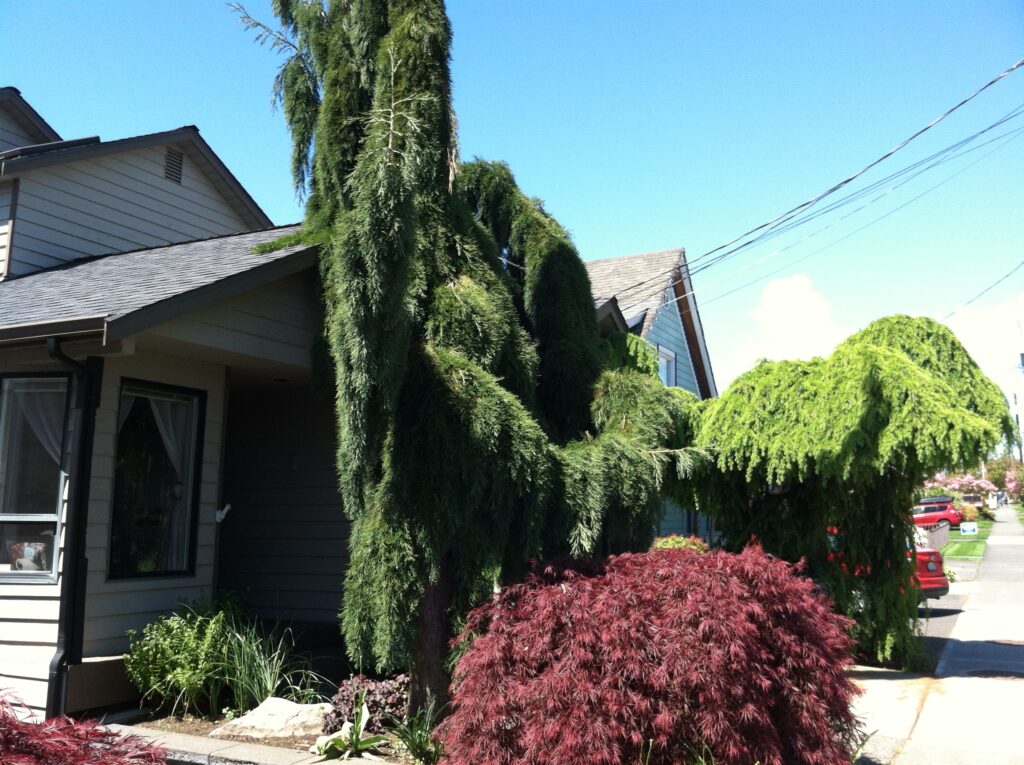Our new Everett home did not have much street appeal. The weeping sequoias not only framed our new house, they seemed to be devouring it! When we entered the house we felt like we were walking into a cave, and every time we went outside we could see more needles waiting to be swept from the sidewalk and driveway. Tim and I agreed: those trees had to go!
After the two trees were taken down we had interesting reactions from neighbors and walkers. Our immediate neighbors were delighted that they no longer had to cope with the mess of needles on a windy day, and other neighbors liked the visual changes that opened up the entry . Only one walker was upset because she thought we had removed “historic” trees. Those trees weren’t “historic,” but they were “history!”
One spring morning a neighbor asked us what we were planning to do with the spaces where the trees had been. We had been asking ourselves the same question. The entry garden had two big stumps, a small rectangle of grass between the street and sidewalk, and some very aggressive healthy weeds that thrived in the newly exposed soil. The garden also featured several large sculptural rocks, a stunning red Japanese maple with spring bulbs already planted underneath, and a large camellia covered with dark pink blooms, so we had a framework for the garden design.
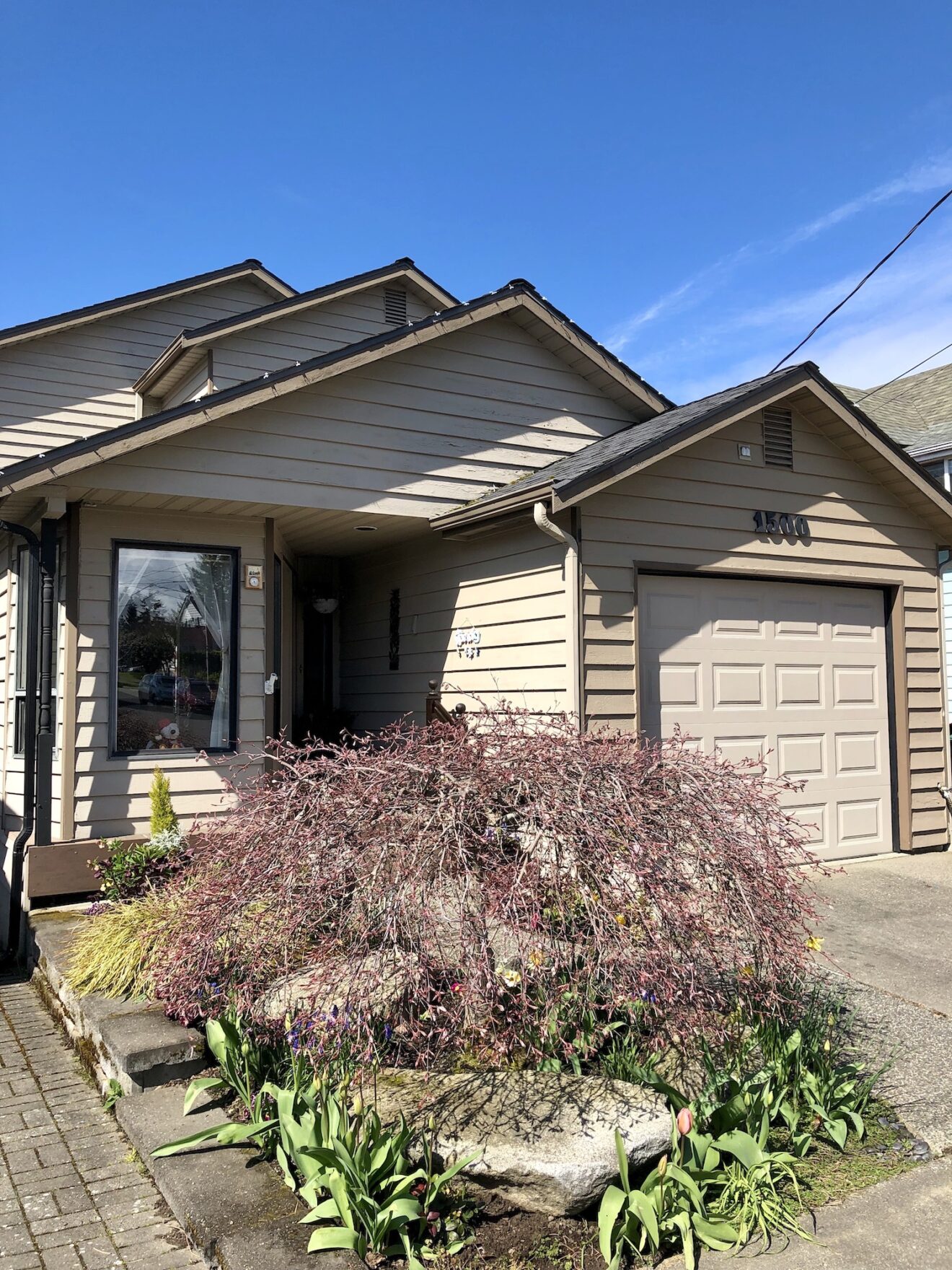
We planted large pots to hide the stumps, dug up weeds, and replaced them with perennials that could provide seasonal color.
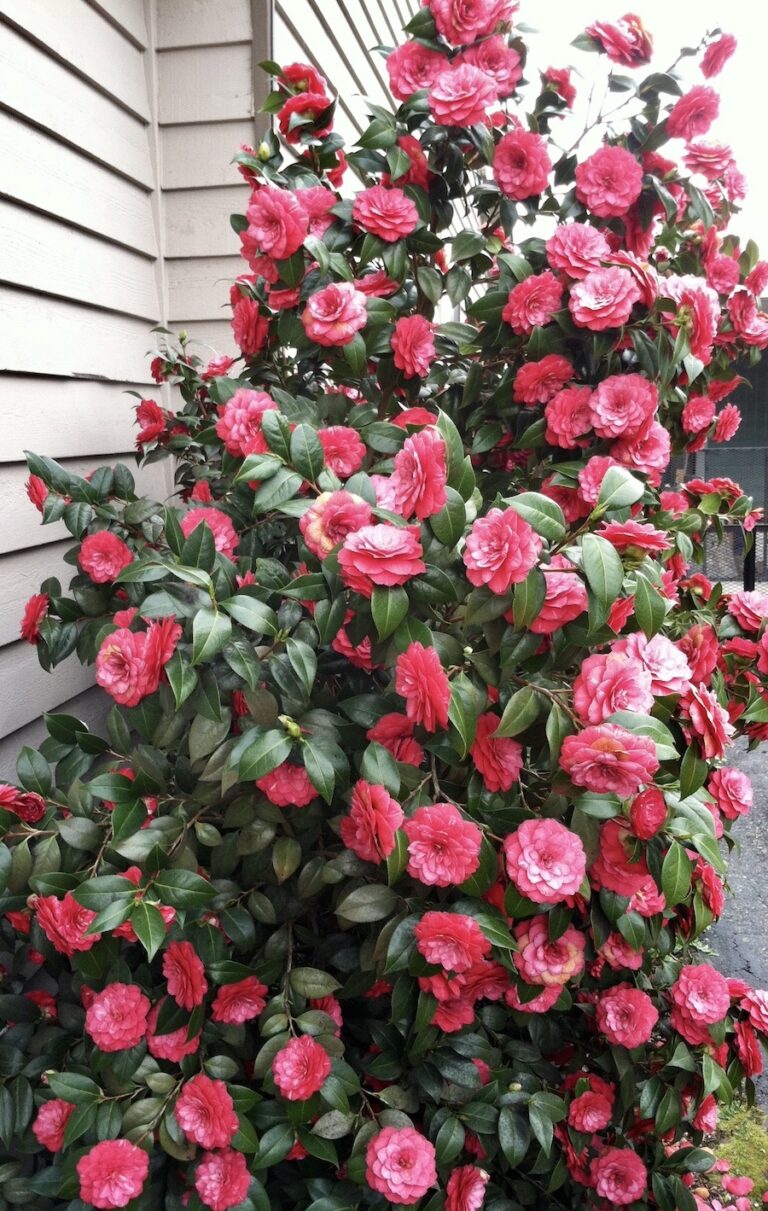
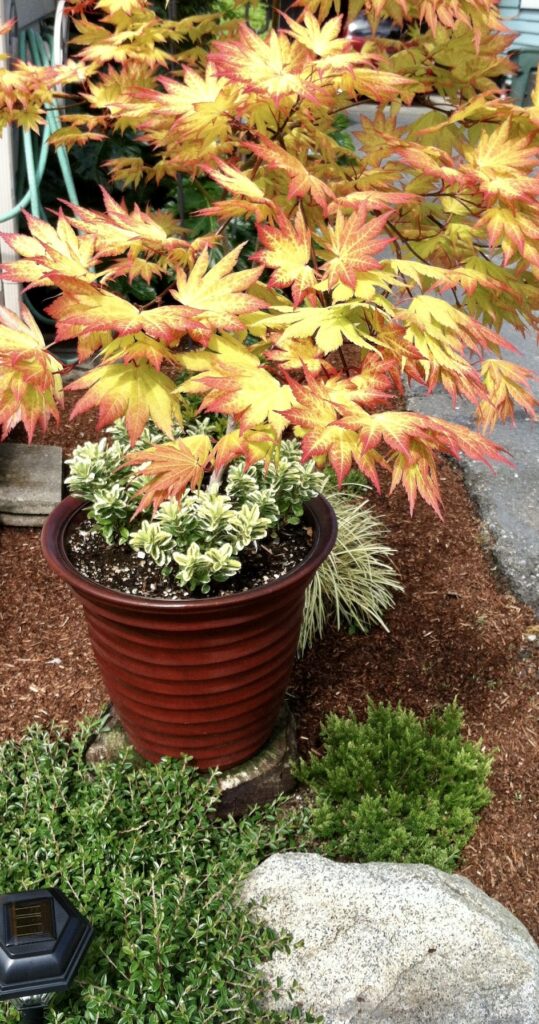
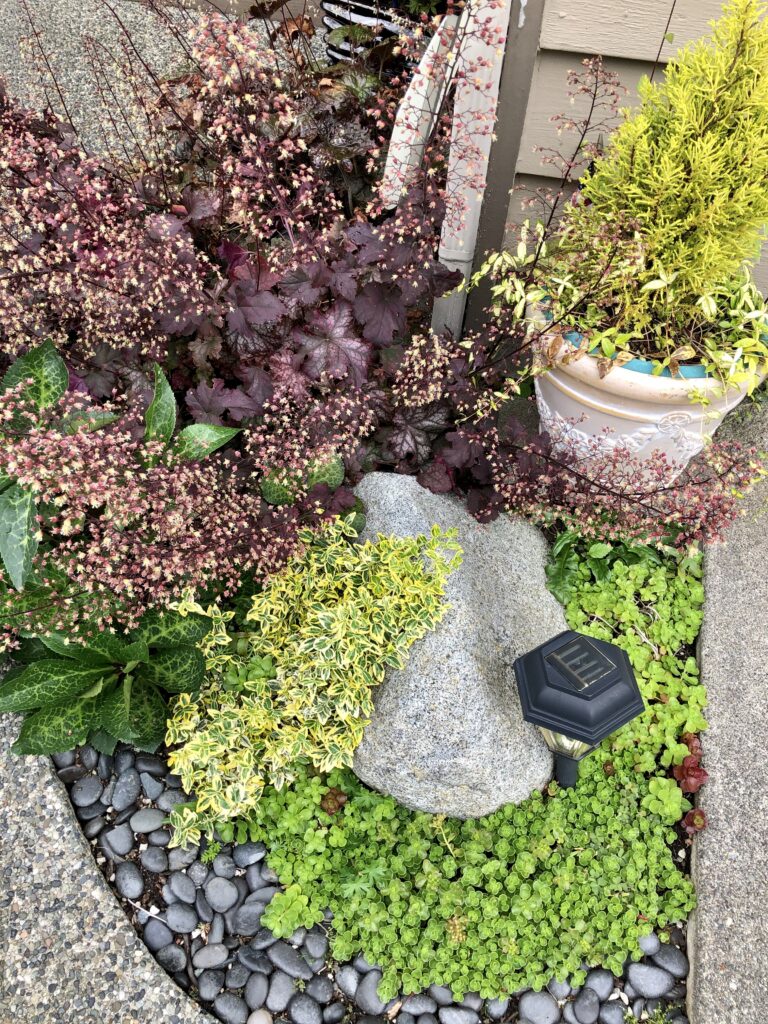
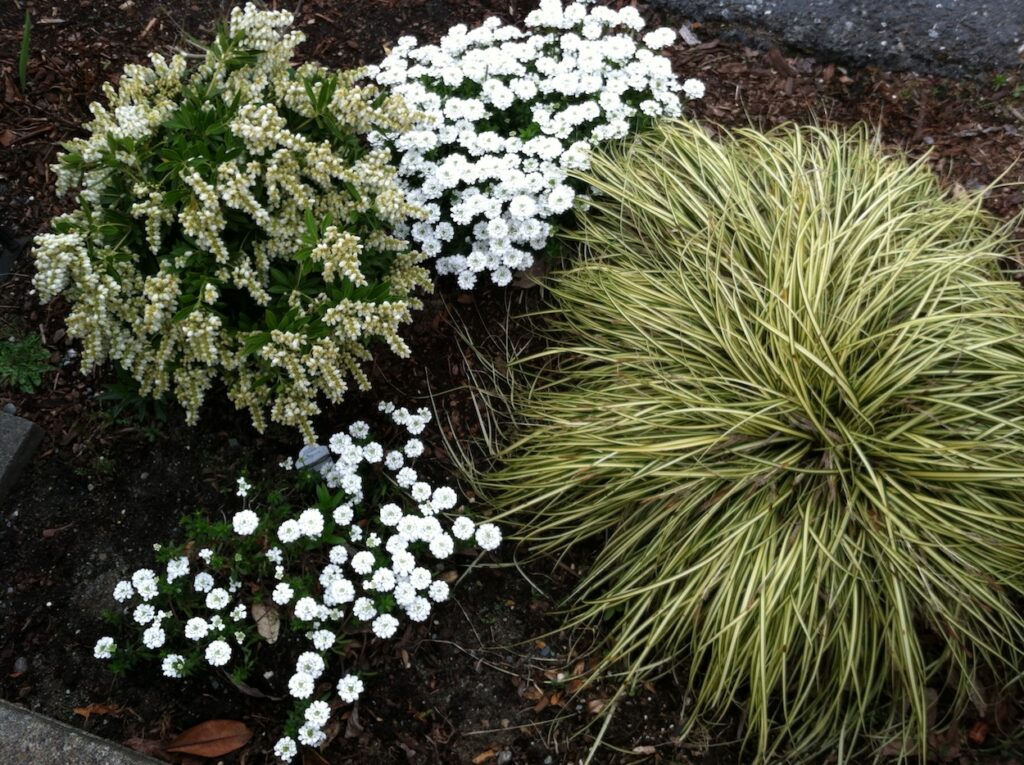
Instead of limiting ourselves to nursery plants, we “shopped our garden” on the east side of the Cascades to find perennials that could be easily transplanted. Since our border garden north of the driveway was sunny in the morning but shady in the afternoon, we transplanted hostas to the front of the camellia, then a hydrangea, and an unusual tricolor hebe, all plants that thrive in those light conditions.
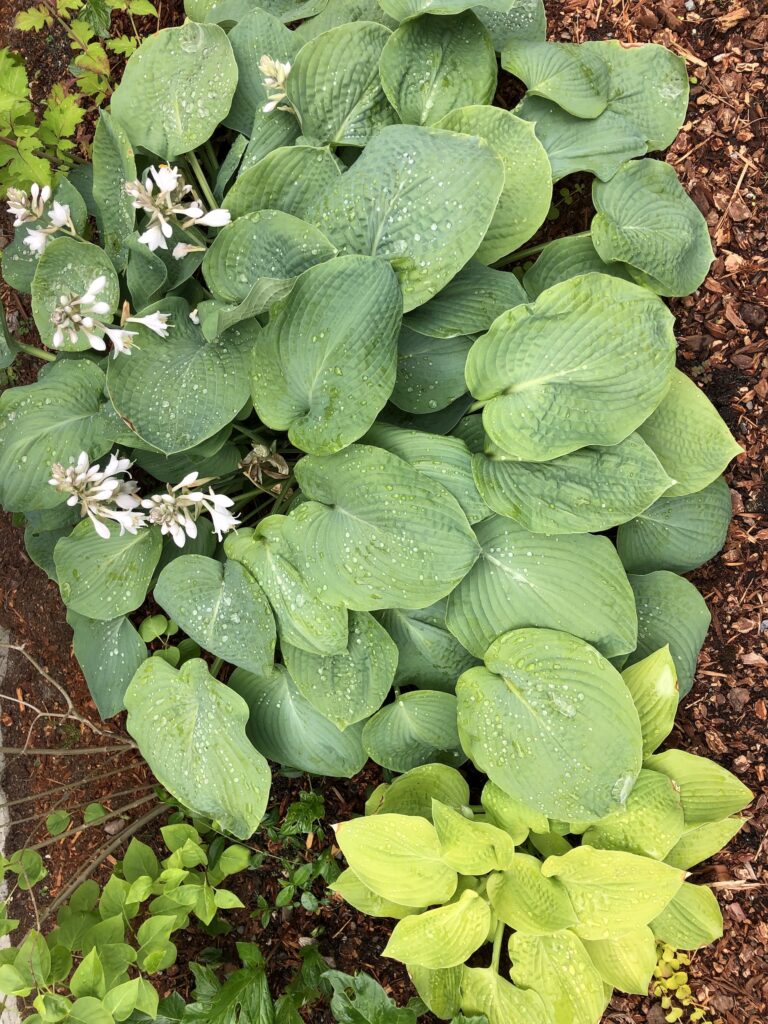
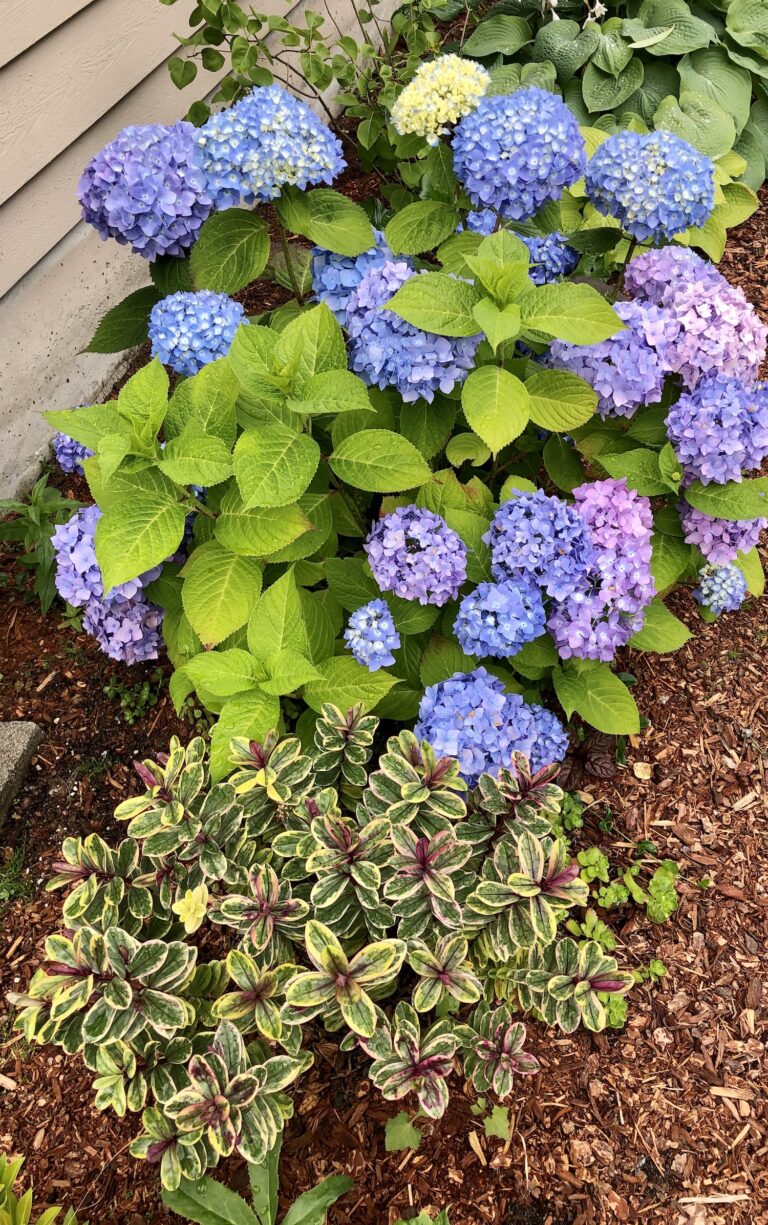
Our driveway border was also redesigned to feature a variety of textures with sedge, candy tuft, pieris, and hellebore in back of the large pot and heather and cotoneaster in front, next to a big rock.
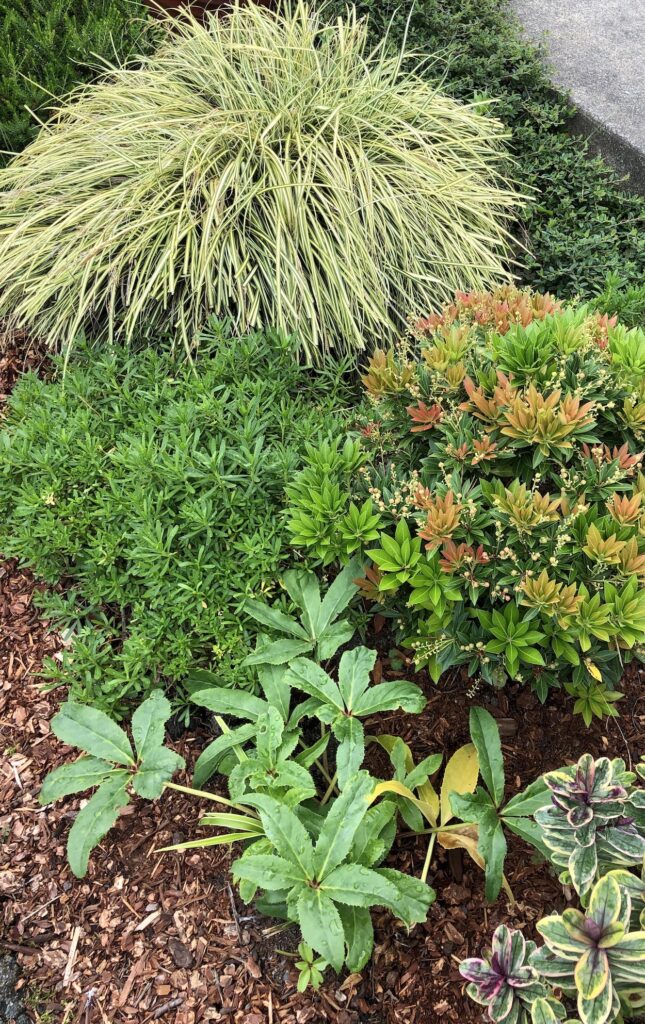
This narrow garden space provided seasonal interest for passing walkers and softened the edges of concrete driveways and sidewalk. We were finally ready to achieve the same goals for the garden beds south and east of the driveway. Stay tuned . . .
